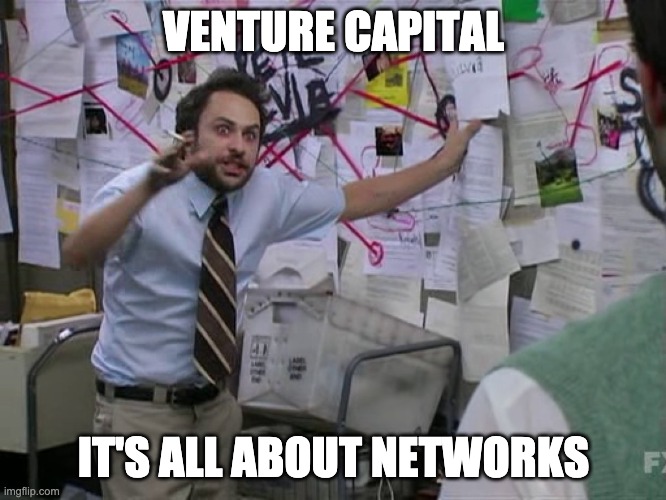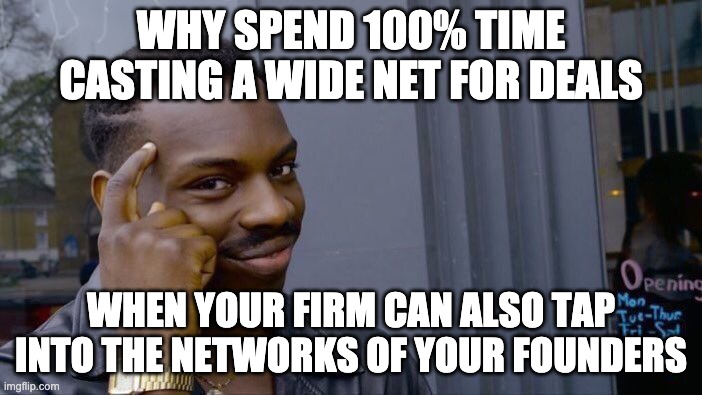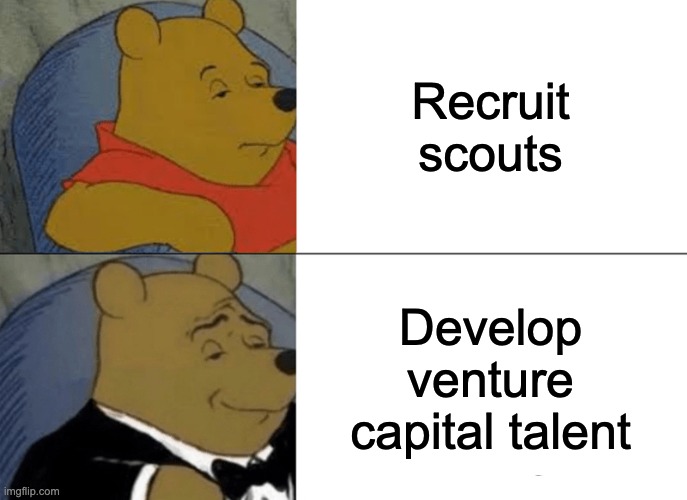Highlights
- One of the key, and often understated, factors that grew Southeast Asia’s venture capital industry in 2010s were the relationships built between investors and potential founders, and the network effects that came out of these relationships.
- Venture capital firms, beginning with Sequoia 12 years ago, began tapping into scout programs as a scalable and efficient way to funnel early-stage deals while also giving opportunities for individuals with strong networks in the community to break into venture capital.
- Scouts programs have also found great success in Southeast Asia, especially in helping global VC firms to localize, but talent in the region still remains underdeveloped, leaving a lot of potential to make local VC networks richer.
- New programs that also build localized VC talent and networks from the ground up apart from simply tapping already established operators and super-connectors could play a key role in growing the industry as the region undergoes another, greater inflection point.
In 2020, Southeast Asia’s tech startups raised US$8.2 billion, still hitting pre-pandemic levels, and in the first quarter of this year, the region speeded ahead to raise US$6 billion. Granted, the majority of this amount went into the likes of Grab and J&T Express, but regardless of who takes a bigger slice of the pie it is clear that even amidst the economic impact of the pandemic, venture capital in Southeast Asia has never been more vibrant. More venture shops are being set up within the region, and established funds continue to raise more dry powder from limited partners.
And yet venture capital in Southeast Asia was not always the way it was. A little more than a decade ago, the Singapore government was still working to convince investors to set up shop in the region.
As Yinglan reminisces in a conversation with fellow investor, Cathay Innovation’s Rajive Keshup, in a Clubhouse session I joined in, “In 2010, 2011, when I was still in the government, I was trying to persuade VCs to come to Southeast Asia and you had to have come up with hundred-page slide decks introducing where Southeast Asia is, where Singapore is, how the local venture landscape is doing, and [potential] limited partners were wondering what is this exactly. Even China was very early then.”
The understated driver of Southeast Asia venture capital’s meteoric rise
Ultimately, Singapore’s efforts to bring in VCs worked — through government co-investment programs and positioning the city-state as an attractive destination for setting up domiciles, investors were incentivized to set up shop and founders also had opportunities to access capital closer to home. Governments of other countries in the region also ran various programs and laid incentives for VCs to more actively invest in their local market.
Alongside the emergence of prime investment targets like Carousell, Grab, Gojek, Tokopedia in the early 2010s, and a competitive landscape fuelled in part by the participation of the likes of Alibaba, Tencent, and Rocket Internet, reasons for VCs to place their stake in the region became more apparent and stronger. As more venture-backed tech companies emerged in the region, more ex-founders and tech company “mafia” turned investors and began setting up their own Southeast Asia or even Indonesia-focused funds.
And all this activity peaked towards the end of the 2010s, with the CVCs of tech companies like Google and Facebook joining mega-rounds and global heavyweight funds like Softbank and Warburg Pincus participating more heavily in the region. And while COVID19 threatened to slow the momentum down, it only accelerated the influx of venture capital and venture professionals into the region as venture-backed tech companies posted even more growth.
But among these incentives or drivers at play in accelerating the venture capital scene of a market or region — the bandwagon effect, favorable regulation, and emergence of attractive targets — arguably the most important one is often understated (because of how specific or personal it is to an individual’s experience): relationship-building.
Regardless of the region, venture capital is an industry that scales through networks. And many of the fund-making deals are brought on early on (even as early as pre-product, pre-revenue) through the ability of investors to build and tap into their individual networks — more often than not, fellow MBA alumni, former employees, friends, or even family. And these relationships form over careers built and talent developed over time. And if there’s any way that VCs have found to “hack” and “scale” this relationship-building, it’s through scout programs.
“But among these incentives or drivers at play in accelerating the venture capital scene of a market or region — the bandwagon effect, favorable regulation, and emergence of attractive targets — arguably the most important one is often understated (because of how specific or personal it is to an individual’s experience): relationship-building.”
Enter VC scout programs
While VC scout programs differ in terms of ticket size, mechanics, and commitment, the underlying principle of these programs is to tap into the professional networks of ecosystem super-connectors and operators and direct these networks towards deal sourcing. VC scout programs essentially funnel the organic network building that already happens so that more of these interactions are likely to convert into real deals.
VC scouts program: a program where a venture capital firm offers professionals (typically operators with deep networks in the ecosystem) profit-sharing on deals these professionals are able to source. The ticket size, mechanics, and depth of commitment of the scouts vary from program to program, and some programs have emerged which are independent of the VC firms themselves (more like angel investor syndicates)
VCs benefit primarily from being able to expand their horizon for dealflow without having to commit too much, especially from the perspective of the partners. The logic here is that in order to find fundmaking deals, investors want to cast a wide net over as many early-stage founders and companies as possible. The problem is that the firm can’t spend so much in terms of time or check size (imagine the inefficiency of having a partner having to choose writing $10-15m checks for 100 companies over supporting a billion-dollar deal) in order to make each potential catch worthwhile, especially for firms that handle a massive portfolio. So a scouts program, at its core, enables these firms to discover early-stage deals at scale, funneling more options for partners to work with and develop.
For the scouts, the benefits range from purely financial (i.e. profit-sharing with the fund) to career-building (e.g. getting hired by the fund, or eventually becoming a fully-fledged angel or seed investor). Most VC scouts programs often involve former leadership of unicorns or ex-founders for example who have built the relevant networks over time who then send over referrals to VC firms running the programs.
The genesis of VC scout programs is often credited to Sequoia Capital twelve years ago when the firm began encouraging portfolio founders to share with them who among their fellow founder friends they would want to back. It did not only grow Sequoia’s dealflow, but also their influence in the Valley, all the while enabling the firm to engage more deeply with their portfolio companies. While it’s only a small part of Sequoia’s fund, the program plays an active role in extending the reach of the firm beyond its core organizational setup. Some notable alumni of their scout program include Jason Calacanis, Linkedin co-founder and angel investor, and Y Combinator’s Sam Altman. Many more funds have since followed suit and some firms are even set up for the sole purpose of running a scout program.
“VC scout programs essentially funnel the organic network building that already happens so that more of these interactions are likely to convert into real deals.”
In Southeast Asia, recruiting scouts isn’t enough
Scouts programs have also played an important but understated role in Southeast Asia’s venture capital. Sequoia Capital also leveraged this approach as it expanded into the region. A specific benefit of scout programs in a region like Southeast Asia is the ability to localize without costing the VC firm too many resources — and as local investors and founders in Southeast Asia will often say, localization is the key to winning in the region. The same principle applies to VC as it does to building a tech startup. It also helps that cultures in the region place a high premium on relationship building and referrals (see how this has fared in ecommerce).
However, the key challenge for VC scout programs in Southeast Asia is attracting or creating supply. Southeast Asia doesn’t have a similar critical mass of professionals (yet) in the ecosystem as Silicon Valley. Aspiring VCs don’t also have easy access to the best resources in the region to get their foot in the door.
The VC industry can’t just rely on recruiting “scouts” but also have to develop talent from the ground up — imagine the on-the-ground action and fulfillment of VC scout programs meeting the networking and training offered by top-tier business schools.
For VCs in the region competing over talent, playing an active role in educating professionals to become full-stack VCs can seem too costly, but engaging directly and building relationships with a pool of talented, aspiring VCs has long-term benefits especially in an emerging market like Southeast Asia. The ideal program would be able to enable greater access to break into the region’s venture capital and participate more actively in the ecosystem, whether that eventually means joining a VC firm, starting a fund, or even starting a venture-backed company.
Find out how we’re making that happen at Insignia Academy >>>
“The VC industry can’t just rely on recruiting “scouts” but also have to develop talent from the ground up — imagine the on-the-ground action and fulfillment of VC scout programs meeting the networking and training offered by top-tier business schools.”
Meeting the demands of Southeast Asia VC in the region’s golden age
Southeast Asia is, as many will say, entering a golden age — another inflection point, and another meteoric rise. We see the same factors that shaped the regional VC landscape ten years ago play out in greater quantity. And once again talent and networks will be key for driving the capabilities of the region’s VC scene to the next level.
As the venture-backed, digital economies within Southeast Asia continue to mature with greater interest from global investors (from early-stage firms to SPACs), it becomes more and more necessary to grow the pool of local investors to bridge the rising demand for investment targets to the many founders and companies in the region. Regardless of the format or approach, any program that increases the supply of VC talent and investor demand for more localization in the region will be beneficial for the ecosystem as a whole.
About the author
Gail Lau is the program director for Insignia Academy, Asia’s first experiential investor accelerator to nurture the next generation of leaders, investors and entrepreneurs. She also writes about breaking into venture capital in Southeast Asia on Substack.
Gail is the Program Director of Insignia Academy, Asia's first experiential investor accelerator to nurture the next generation of leaders, investors and entrepreneurs. Led by world-class VC and industry leaders, the 12-week immersive program is designed for aspiring venture capitalists and ambitious founders where individuals will get to participate in investment committee meetings and invest in real-life businesses. She is an experienced HR professional with 7 years of experience in Talent Acquisition and People Operations in both in-house and agency.


